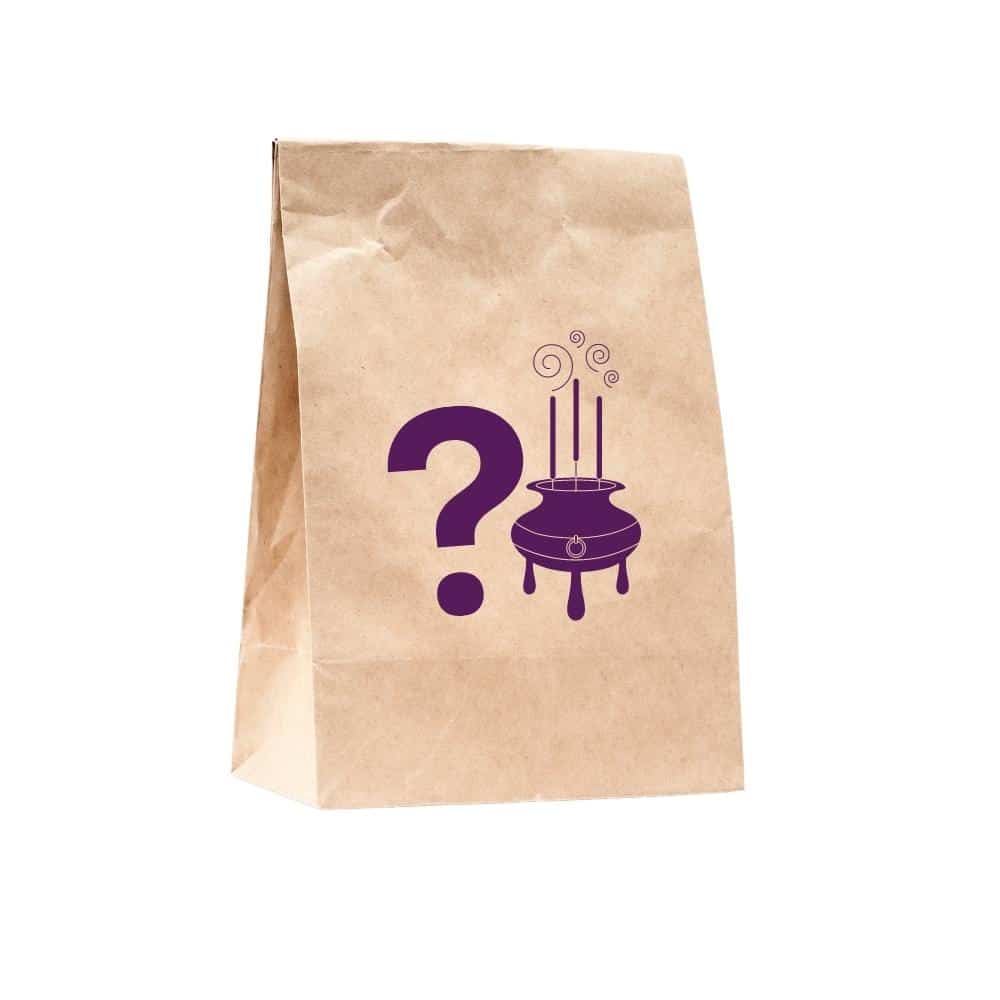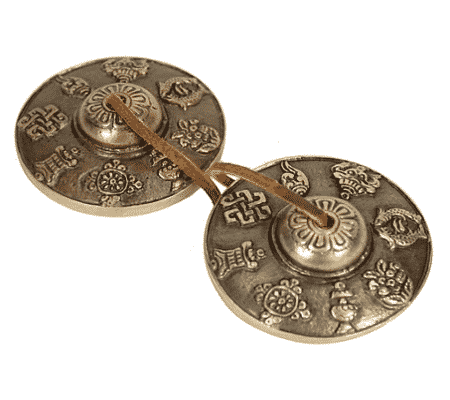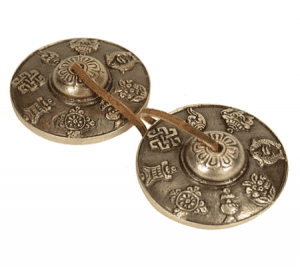€27,95

Tingshas (ding-shas, cymbals) are used as musical sacrifices in spiritual acts, and during meditation, at regular intervals to keep attention. These musical offerings are used during puja’s (prayer rituals) in which several instruments have a place: bells, drums, cymbals and trumpets. Musical sacrifices are certainly common in many Tibetan Buddhist and Hindu rituals. Nowadays they are used by both laymen and priests. They are also an integral part of the Bijfeng shui (harmonisation of living and working areas), during meditation, cleaning of spaces and bodies, healing and equalisation of energy. For what purposes can I use tingsha’s? You can use the two discs against each other, to create a beautifully bright high tone, which lingers for a long time, purifies the atmosphere and evokes an extraordinary sense of silence. The sparkling tone of a tingsha resonates immediately in our hearts. You can use them to refocus attention, to make us aware of who we are and what our priorities are in this often turbulent world of lights. If we hang them next to each other and then let them come together, a beautiful, vibrating sound wave emerges between the two, while they produce a high sound vibration – an impressive symphony of deep penetrating sounds. Tingsha’s and feng shui Tingsha’s are also used in feng shui to purify the energy in a room and let it flow freely again, by letting them sound in the four corners of the room. A beautiful way of energy purification when working with incense is not an option. Tingsha’s and healing with klank Because they have a healing and balancing effect on our aura, they are also used to indicate the beginning and the end of a meditation period. It is said that the use of tingshas works as a way to keep our attention in the here and now. How do you store tingshas at As with many altarpieces, it is advisable to wrap them in cloth when they are not in use, or in a specially designed tingsh case of a double-boxed brocade tingsh case.Decorations of tingsha’s The mould can have decoration at the top – usually with dragons, the mantra Om Mani Pad Me Hum, the eight Tibetan prosperity symbols or simply smooth finish. Composition of tingsha’s Each tingsha is cast separately in various metal alloys, usually consisting of at least three different ones. Most of the cymbals are made of bronze, which mainly consists of copper and tin, to which sometimes small amounts of nickel are added. Better quality Tingshas contain seven or m
6.5 cm
247 g




© 2025 Spiru
